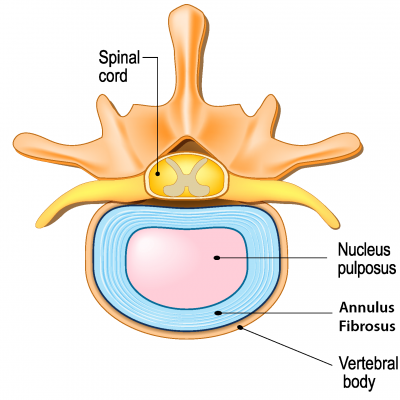Needle Approach To Treat Your Back Pain
(Slipped Disc)
Needle Approach To Treat Your Back Pain
(Slipped Disc)

Herniated disc (slipped disc) is a condition that can occur in any part of your spine, but most commonly in the lower back (lumbar spine). The intervertebral disc consists of an inner “jelly-like” nucleus pulposus, which encased by annulus fibrosus. When the annulus fibrosus becomes weakened, nucleus presses against the annulus, causing the disc to bulge or protrude outward. This is knowns as disc herniation.
Symptoms vary greatly, patient may experience a low backache or no pain at all if the herniated disc is not pressing on a nerve. When lumbar disc herniation occurs, pressuring on one or several nerves that contribute to the sciatic nerve can cause pain, burning, tingling and numbness that radiates from the buttock in the leg and sometimes into the foot


Herniated Lumbar Disc Presses on Nerve Root

Herniated Lumbar Disc Presses on Nerve Root




Starting from lower back pain. As the disease progress, one might feel sharp shooting pain in the buttock, then migrate to thigh, calf and toes. This is known as sciatica, normally will affect one side of the leg.


Aging is the most common risk for lumbar disc herniation. Disc may become weakened (disc degeneration) over time as you age, which may not support the spine.
Physically demanding jobs which require heavy lifting and bending are at a high risk for herniated disc. This is due to improper posture in performing the tasks will exert high pressure on the intervertebral, which might compress on the disc and eventually causes disc herniation. Trauma to the spine such as accident or sudden fall will also exert high pressure on the intervertebral, leading to slip disc.
Additionally, people who are physically inactive will tends to have weak back and abdominal muscle, which may not support the spine properly. Sudden participate in overly strenuous activities will increase the risk of lumbar disc herniation.
Lumbar disc herniation often occurs as a result of aging, leading to disc degeneration. Some of the main factors contributing for lumbar disc herniation are aging, physically demanding work (jobs that require heavy lifting, twisting, pulling, pushing and bending), trauma (e.g. accident, falling, etc) and obesity.

PLDD is a minimally invasive treatment option for patients with low back pain caused by herniated disc (slipped disc). It is performed under local anaesthesia. A laser fibre is inserted percutaneously (through skin) into the nucleus pulposus through a micro-needle under X-Ray guidance without any open surgical wound.
Laser energy is delivered to the nucleus pulposus, results in vaporisation of water content and reducing internal disc pressure. A reduction of intradiscal pressure causing the herniated part of the disc to recede toward the centre of the disc, thus leading to reduction of nerve root compression. Patients can feel immediate relief of radicular pain*.

Laser fibre is inserted into the herniated disc.

Laser energy is delivered to the nucleus pulposus to reduce water content and internal disc pressure.

Reduction of intradiscal pressure causes the herniated part of the disc to shrink.

• Nucleus pulposus is back to normal at the end of treatment.
• No compression of nerve root.
• Immediate relief of pain.
Patients who are suffering from herniated disc / slipped disc.
PLDD can be performed as Day-Care procedure, patient can be discharged within the same day after the procedure or alternatively stay for a night in the hospital.
No, this procedure is minimally invasive, whereby local anaesthesia will be sufficient. You will be awake and chit chat with the doctor throughout the procedure. Alternatively, if you prefer to sleep during the procedure, you may discuss with your doctor for the option.
For PLDD, 3 levels of herniated disc can be treated in one operation.
© WSM MEDIC All rights reserved 2025